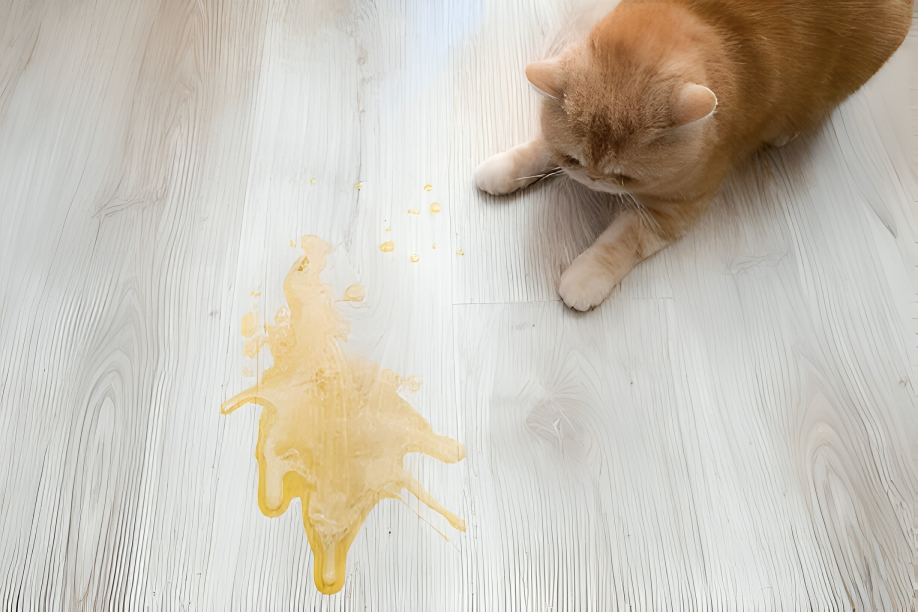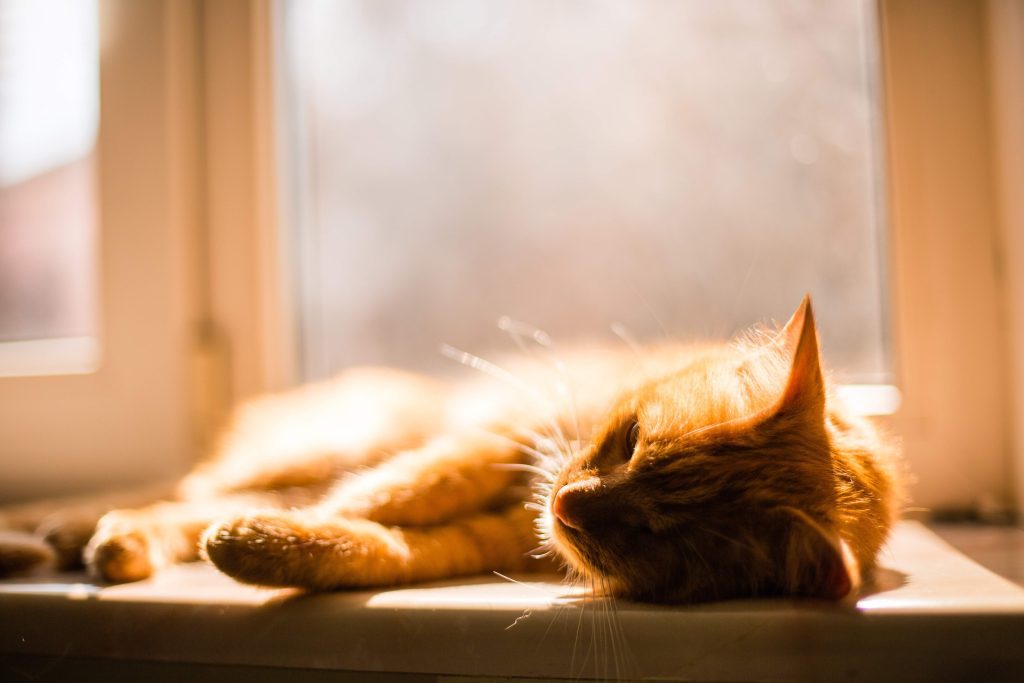Ragdolls are known for their calm, affectionate nature, but that same gentleness can make them more emotionally sensitive than many breeds. Stress in your Ragdoll isn’t just “a mood”; it can affect immunity, disrupt appetite and grooming, and even shorten lifespan.
The tricky part? They often hide anxiety until symptoms are more obvious, like sudden litter box changes, avoiding cuddles, or over-grooming.
Spotting these signs early is preventive care, helping protect your cat’s health, happiness, and years of companionship.
Why Ragdolls Are Prone to Stress
Because of their gentle, people-focused nature, Ragdolls can be especially sensitive to changes like new pets, loud noises, or disrupted routines (breed guides note this trait, though individual temperaments vary). While acute stress may pass quickly, chronic stress can weaken immunity and digestion.
In severe cases, a cat that stops eating may develop fatty liver disease (hepatic lipidosis), which is life-threatening without treatment [Cornell Vet College]. Signs can be subtle — a missed meal, overgrooming, or avoiding cuddles.
Recognizing these early isn’t overreacting; it’s preventive care that helps your Ragdoll return to a happy, healthy life faster.
You Might Also Like
10 Signs Your Ragdoll Is Stressed
Ragdolls are masters at hiding discomfort, so stress can build quietly until it starts to affect their health and happiness. Unlike more vocal or aggressive breeds, Ragdolls often show anxiety through subtle changes in routine, grooming, or interaction.
Understanding these early signals can help you step in before problems escalate. Below are the 10 most common cat stress symptoms seen in Ragdolls — each explained so you’ll know what it looks like, why it happens, and what you can do right away.
1 – Excessive Grooming or Bald Spots
In stressed Ragdolls, overgrooming often starts on the belly or legs, sometimes creating bald patches or raw skin. You might notice them licking for over 10 minutes several times a day, or finding hair clumps on bedding. Restoring routine, adding enrichment, and considering pheromone diffusers (evidence is mixed — consult your vet) can help break the cycle.
Recommended Post
2 – Litter Box Avoidance
A Ragdoll suddenly peeing outside the box isn’t “being naughty” — it’s often anxiety from environmental changes, new scents, or health discomfort. Identify triggers, clean soiled spots with enzymatic cleaners, and restore a stress-free bathroom space.
Recommended Post
Why Does My Ragdoll Cat Not Use the Litter Box? | CatsQuestion
3 – Reduced Appetite or Overeating
Stress can dull appetite hormones or, conversely, trigger comfort eating. If a cat stops eating for 24–48 hours (especially if overweight), call your vet — prolonged fasting can lead to hepatic lipidosis. Overeating can also cause weight gain and increase diabetes risk. Monitor food intake closely and maintain consistent feeding routines to reassure your cat.
4 – Withdrawal from Family Interaction
If your usually affectionate Ragdoll hides more or avoids cuddles, stress could be the cause. This withdrawal often follows disruptions in household routine or tension in the environment. Give them quiet spaces and let them approach on their terms.
5 – Increased Vocalization
A soft-spoken Ragdoll who suddenly meows more — especially at night — may be signaling unease. Look for repetitive meows or yowls outside their normal pattern, often after loneliness, new pets, or schedule changes. Offer brief playtimes, timed treats, and calming bedtime routines.
6 – Restlessness or Pacing
Ragdolls are generally laid-back, so restless movement, frequent pacing, or difficulty settling are notable red flags. This behavior often means they feel unsafe or overstimulated. Reduce noise, limit disruptions, and provide a secure retreat.
7 – Change in Sleeping Patterns
If sleep changes by >30% of baseline or your cat seems difficult to rouse/sleeping excessively for days, monitor and call the vet if combined with other signs. Over-sleeping may be an avoidance tactic, while reduced rest can signal hypervigilance. Restoring environmental calm often resets sleep cycles.
You Might Also Like
8 – Uncharacteristic Aggression
Though rare in Ragdolls, sudden hissing, swatting, or biting often stems from fear-based stress. Identify the trigger, give them space, and avoid forced interaction until they feel secure again.
9 – Tail Twitching When Resting
A normally relaxed Ragdoll tail should be still when lounging. Persistent twitching or flicking can be a subtle sign of inner tension. Observe for other changes and address environmental stressors.
10 – Excessive Scratching or Marking
Increased scratching on furniture or walls can be a territorial reassurance behavior when they feel threatened. Offer multiple scratching posts and maintain familiar scents in their core territory.
You Might Also Like
Common Causes of Stress in Ragdoll Cats
Stress in Ragdolls isn’t always sparked by dramatic events — even small disruptions can unsettle this gentle, people-focused breed. Their strong attachment to both territory and routine means they notice changes you might overlook. Common triggers include:
- Environmental changes like moving, renovations, or rearranging furniture ease the shift by keeping familiar scent items and creating transitional zones.
- New pets or people — start with scent swapping (rub a towel on the newcomer, give it to your cat for 48 hours, repeat, then feed near a closed door before gradual visual contact through a barrier).
- Loud noises and strange smells offer safe hideaways and keep background sounds steady.
- Separation anxiety — use low-stress departure routines and timed puzzle feeders.
- Lack of enrichment — rotate toys, add climbing spots, and vary play sessions.
- Medical issues — schedule prompt vet checks to rule out pain-driven anxiety.
And remember, the general litter box rule is one per cat, plus one extra, to avoid territory stress. Recognizing these causes early lets you connect them to warning signs and act before stress becomes chronic. A single trigger might pass, but overlapping ones can tip your Ragdoll into serious, long-term anxiety.
How to Help a Stressed Ragdoll Cat
Helping a stressed Ragdoll isn’t about quick fixes — it’s about understanding their triggers and making changes that calm both their mind and body. Because this breed often hides distress until it’s significant, acting early can prevent chronic anxiety and related health issues. Here’s how to combine immediate relief with long-term prevention.
Maintain a Consistent Routine
Ragdolls thrive when life feels predictable. Feed, play, and rest at the same times each day to lower cortisol and give them a sense of security. Even small changes should be introduced gradually, like shifting mealtimes in 10–15 minute increments.
Create Safe Zones
Provide quiet, cozy hideaways where they can retreat without being disturbed. Elevated perches or enclosed beds mimic natural dens, reducing sensory overload and restoring control. Keep these spaces untouched during household changes.
Use Calming Aids
Pheromone diffusers, species-appropriate music, and certain vet-approved supplements can soothe nerves — but remember, they’re supportive tools, not standalone cures. Pair them with trigger reduction for best results.
Provide Mental and Physical Stimulation
Short daily play sessions, puzzle feeders, and gentle affection meet both their hunting instincts and social needs. Overstimulation can backfire, so balance activity with quiet time. Have you tried any of these? Tell us which helped — comment below.
You Might Also Like
Manage Household Changes Gradually
Introduce new people, pets, or scents in stages. Scent-swapping and transitional zones help them adjust without feeling their territory is under threat.
You Might Also Like
When to Call Your Vet or a Behaviorist
Some stress signs need urgent action — not eating for more than 24–48 hours (especially in overweight cats), vomiting, blood in urine, open wounds, or self-mutilation should trigger an immediate vet call.
Worsening grooming, big appetite changes, or sudden aggression toward people should be addressed within a few days. If behavior changes linger beyond two weeks despite home strategies, it’s time to escalate.
A vet visit rules out pain or illness, while a certified feline behaviorist can help redesign the environment and guide behavior changes. In severe cases, temporary medication can bridge recovery without dulling your cat’s personality. Early action prevents suffering and speeds recovery — it’s about fixing the problem at the source, not waiting for it to damage your cat’s well-being.
Final Thoughts
Stress in your Ragdoll isn’t a life sentence — with consistency, awareness, and gentle adaptation, most cats fully bounce back. Remember, they mirror your emotional tone; your calm truly becomes theirs.
You don’t need to be perfect — small, steady changes like keeping routines, providing safe retreats, and using mindful interaction matter far more. Watch for subtle signals, act early, and celebrate small wins, like the day your cat returns to their sunny spot.
Low-level stress can be normal, but chronic stress isn’t — small steady changes make a difference. Check trusted resources like the American Association of Feline Practitioners or ISFM. Tell us one thing that helped your Ragdoll in the comments.

Hi, I’m Mo Pavel—a writer, researcher, and devoted animal lover. With my Persian cat Luna and two loyal German Shepherds, Rex, and Max, I live a life centered around pets. Beyond my home, I care for stray dogs, ensuring they feel loved and safe. Through Cats Question, I share insights to help pet owners create better lives for their furry companions.






